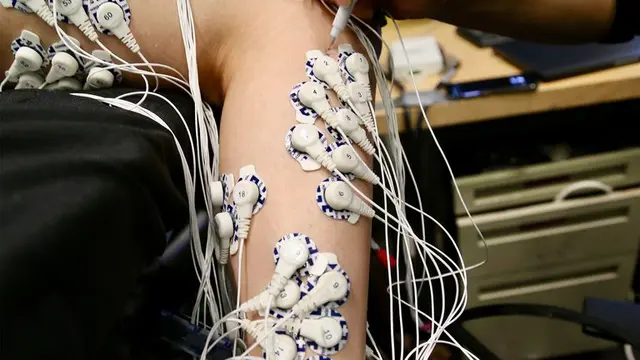A new type of surgery can help amputees control their remaining muscles and sense where their "phantom" limb is in space.
This should mean better control of prosthetic limbs, as well as less pain for patients, according to a study of the new procedure.
Researchers at the Massachusetts Institute of Technology (MIT) said that most amputations sever the muscle pairs that control affected joints, such as elbows or ankles.
But connecting those pairs again allows them to retain their normal 'push-pull' relationship, giving amputees better sensory feedback.
The study included 15 amputees who received the new procedure - agonist-antagonist myoneural interface (AMI) - for amputations below the knee, and seven patients who had traditional amputations.
Researchers measured the precision of movement in the ankle and a foot joint after amputation.
The patients in the first group were able to control their muscles more precisely, also saying they felt more freedom of movement and less pain in the affected limb.
During surgery, this group had two sets of muscles reconnected - the muscles controlling the ankle and the muscles controlling the subtalar joint - which allows the sole of the foot to tilt.
Shriya Srinivasan, lead author of the study, said: "Both our study and previous studies show that the better patients can dynamically move their muscles, the more control they're going to have.
"The better a person can actuate muscles that move their phantom ankle, for example, the better they're actually able to use their prostheses."
Another version of the surgery is being developed for other types of amputations, including above the knee and above and below the elbow.
The researchers have also developed a version that can be used for people who have already had a traditional amputation.
This involves grafting small parts of muscle to serve as the agonist and antagonist muscles for an amputated joint. It is called regenerative AMI.
The study is published in Proceedings of the National Academy of Sciences.
 简体中文
简体中文



